

After eleven years' service, almost to the day on which it was commissioned, the first of RAL's IBM 360/195 computers ran its last program.
To mark this end of an era, a Closing Ceremony took place in the Atlas Centre on the evening of Thursday 21 October 1982 at which over one hundred of its admirers gathered to say farewell to a superb machine.
Originally installed in November 1971 in R1 for use by the high energy physics community of the Rutherford Laboratory, 20% of its time was allocated to the Atlas Laboratory, then a separate entity under the direction of Dr Jack Howlett. It cost £3 Million, was the top of IBM's 360 range and was designed specifically for the science and engineering community. The hardware was commissioned and accepted in 15 days a remarkable feat for those days - and provided mainly a batch service. It also supported an ever increasing terminal system (ELECTRIC) and a remote job entry network.
Throughout the next few years the demand for computing continued to rise and in 1976 with the merger of the two Labs and a second 195 being installed at the Atlas Centre, the original was moved from R1 to join it. This configuration was the heart around which RAL's computing facilities expanded to become one of the most comprehensive systems in Europe.
Opening the ceremony Dr Geoff Manning (Director of RAL and former Head of Atlas Computing Division) welcomed everyone to what he termed the Wake. He gave a brief history of the computer, extolled its virtues, passed quickly over some of its lovable little foibles and expressed himself very satisfied with the overall performance. He warmly thanked IBM for their excellent support over the years also RAL staff past and present, most of whom he was very pleased to see in the audience. Lastly he expressed his thanks to the Users without whom there would be no computing and no future.
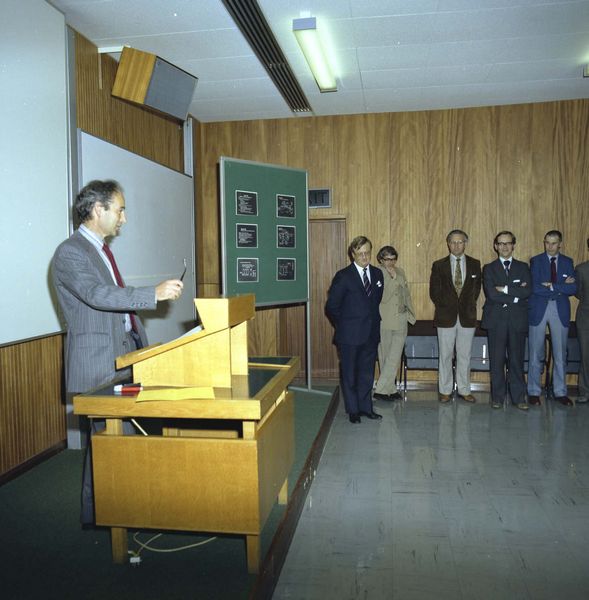
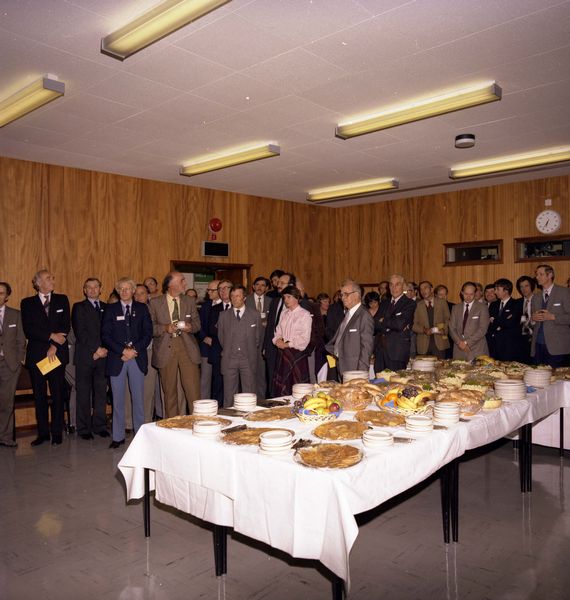
Crowd includes Brian Oakley (SERC), Roger Elliott (Univ of Oxford), Tim Pett, Doug House, Keith Benn, IBM Engineers, Chris Osland, Susan Wade, Pat Athawes, Bill Walkinshaw, Alan Mayhook and many others.
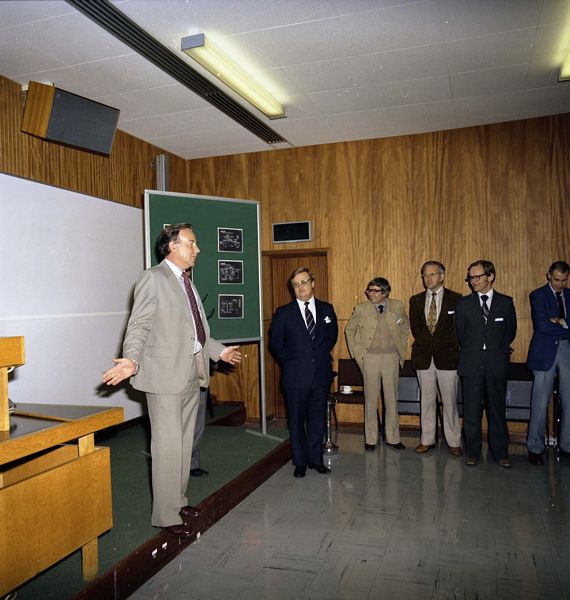
Mr David Livermore (Sales Director of IBM) commented that it seemed very British to have a wake for a computer. I hope it is because of happy memories. He thanked Geoff Manning for his kind words about the reliability of the 195 and concluded On behalf of all the staff of IBM, I say it has been a real pleasure to work with you. It is a source of pride to us to be connected with you.
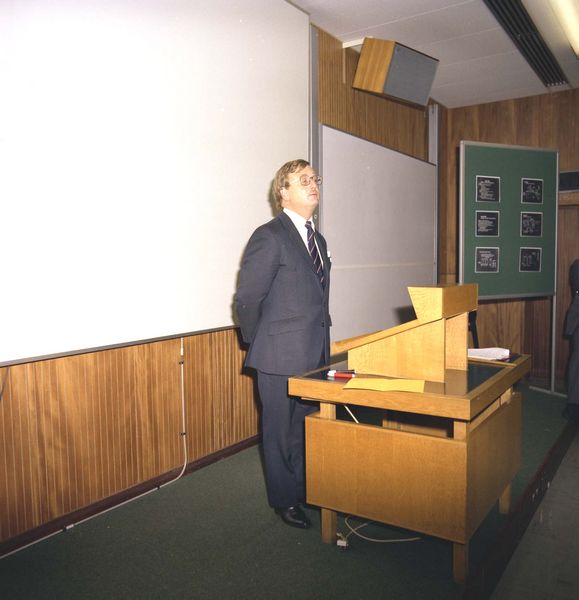
Mr Bill Walkinshaw (former Head of Computing and Automation Division) shared reminiscences of the beginning and marvelled at the changes that had occurred since the late '50s when there was little computing power in the UK. Today the work done at RAL is excellent, he said.
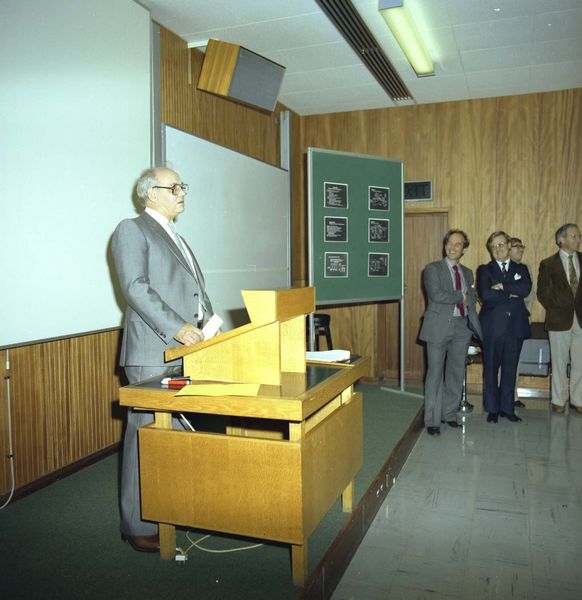
The company then repaired to the machine room where Dr Bob Taylor explained that the program being run was a very early program designed to exploit hardware features unique to the 195. Its last messages were
END OF LAST JOB ON 195 STOP 195
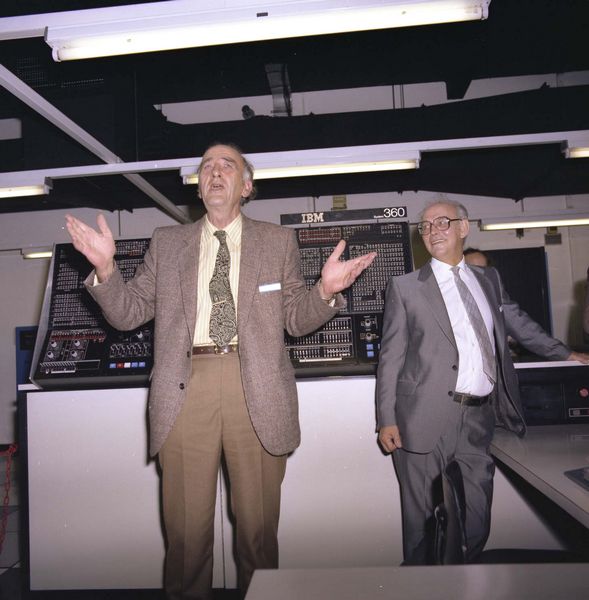
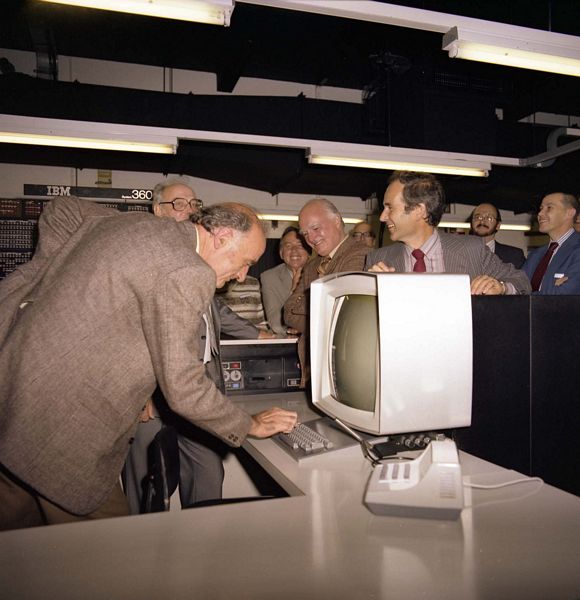
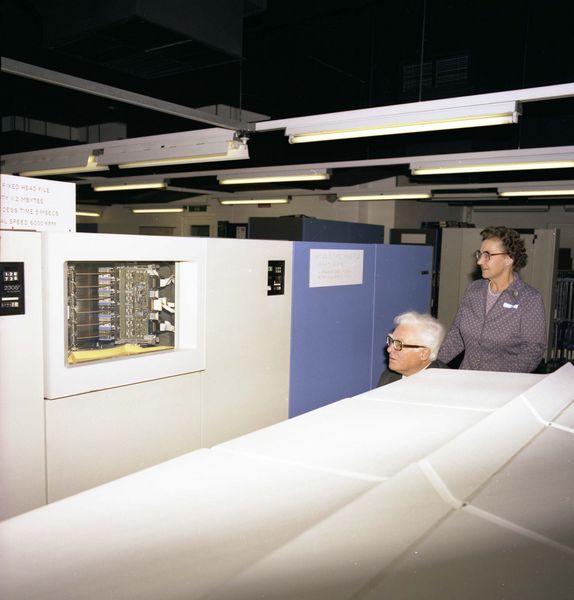
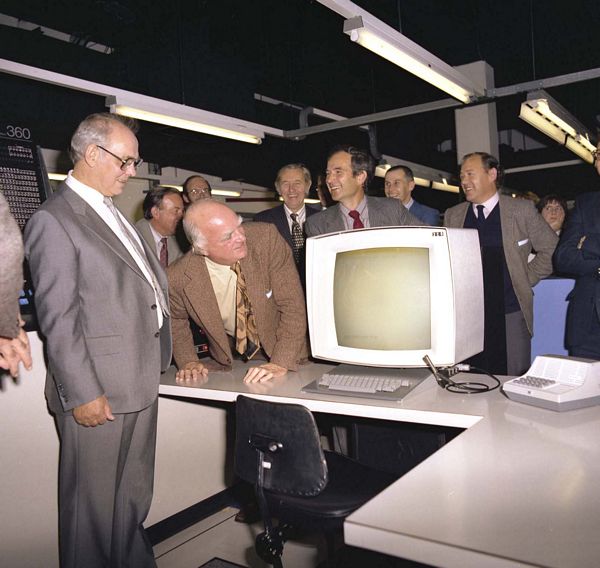
Bill pushed the power-off button and so ended an era of a splendid computing engine undoubtedly unique in its time and which will be remembered with affection by all who worked with it.
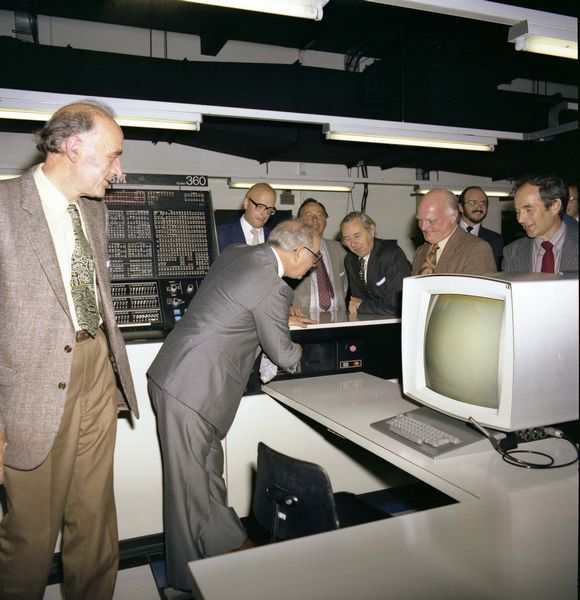
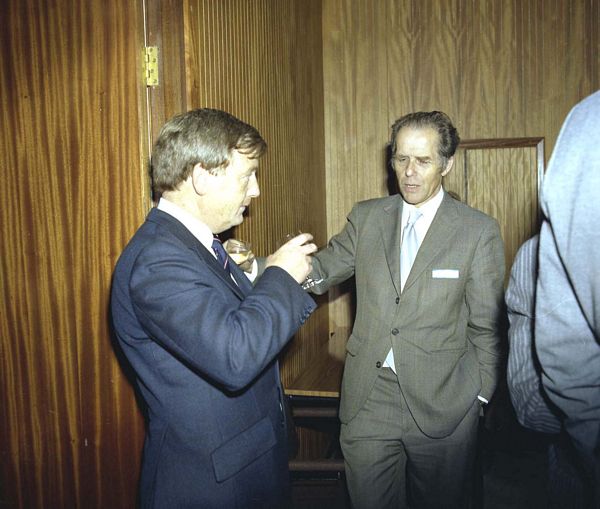
Although the Central Computing Complex at RAL is in the middle of its most major upheaval for many years, the user population should nothing other than see an improvement in the service.
In May this year, Council approved two major computer purchases for RAL: the IBM 308lD, and the ICL Atlas 10. The 308lD, one of IBM's new series of machines, has almost as much power as both the 360/l95s together.
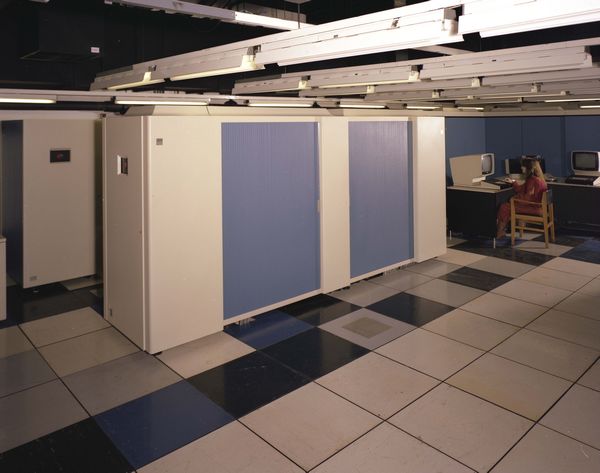
The system was delivered on 7 July 1982 and installed within a day. After checkouts, operator training etc it entered service on the 19 July 1982, replacing one of the 360/ 195s. It was configured to take on the front-end role (supporting the interactive and communications work as well as batch) on 12 August 1982, two weeks ahead of the initial schedule. There have been no problems apart from one early fault involving the replacement of a processor component.
The second 360/195 is to be removed from service in October, and then both the 360s are physically to be removed from the building - a major exercise in itself. Fortunately the cost of this is amply compensated for by the scrap value, which, since there is gold in many of the circuits of these old computers, is considerable.
The ICL Atlas 10, is one of the most powerful IBM-compatible computers in the world - its single processor has about three times the power of a 360/195. The Atlas is expected in the middle of next year but since it will the first of its kind in the UK, RAL and ICL will take a few months subjecting it to various tests before it enters full service in October 1983.
This will complete the major processor replacements, and enable RAL to concentrate on plans for other hardware and on a software programme which will bring the facilities once more up to the standard demanded by our scientific users at RAL and in universities and polytechnics throughout the UK.